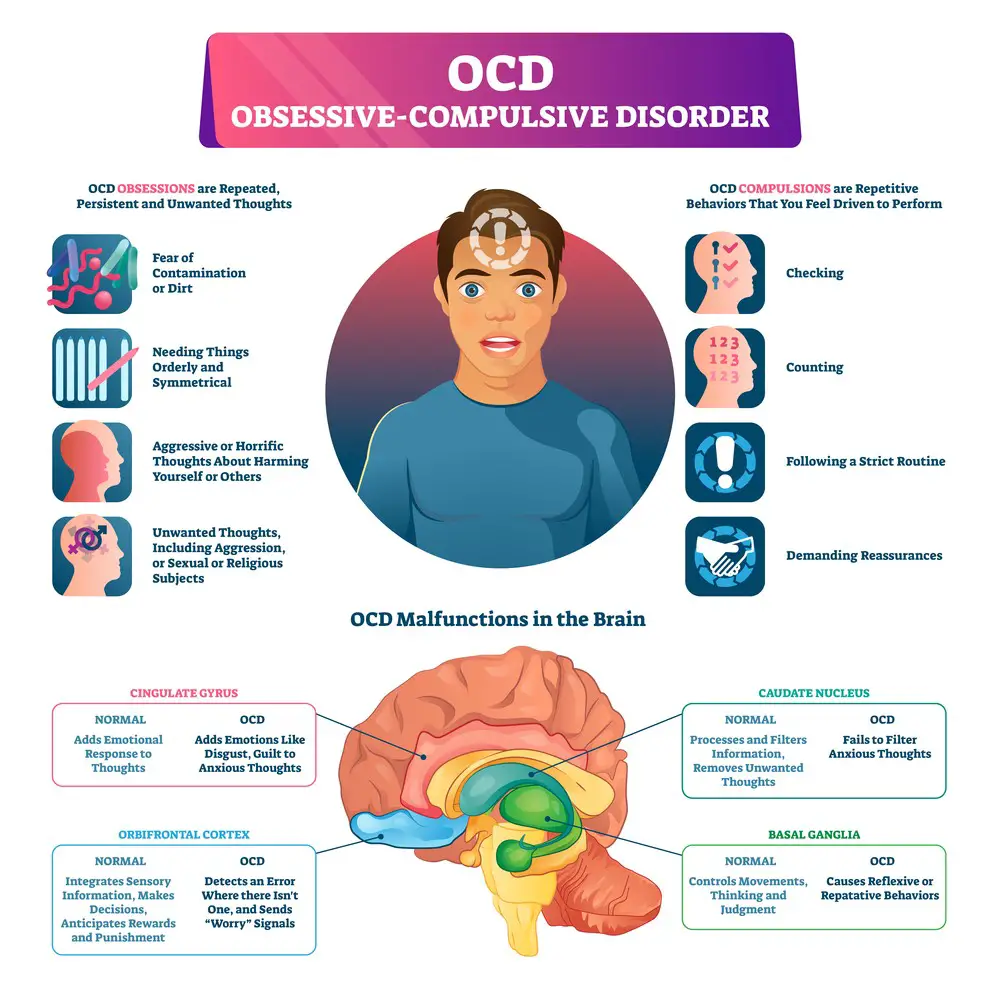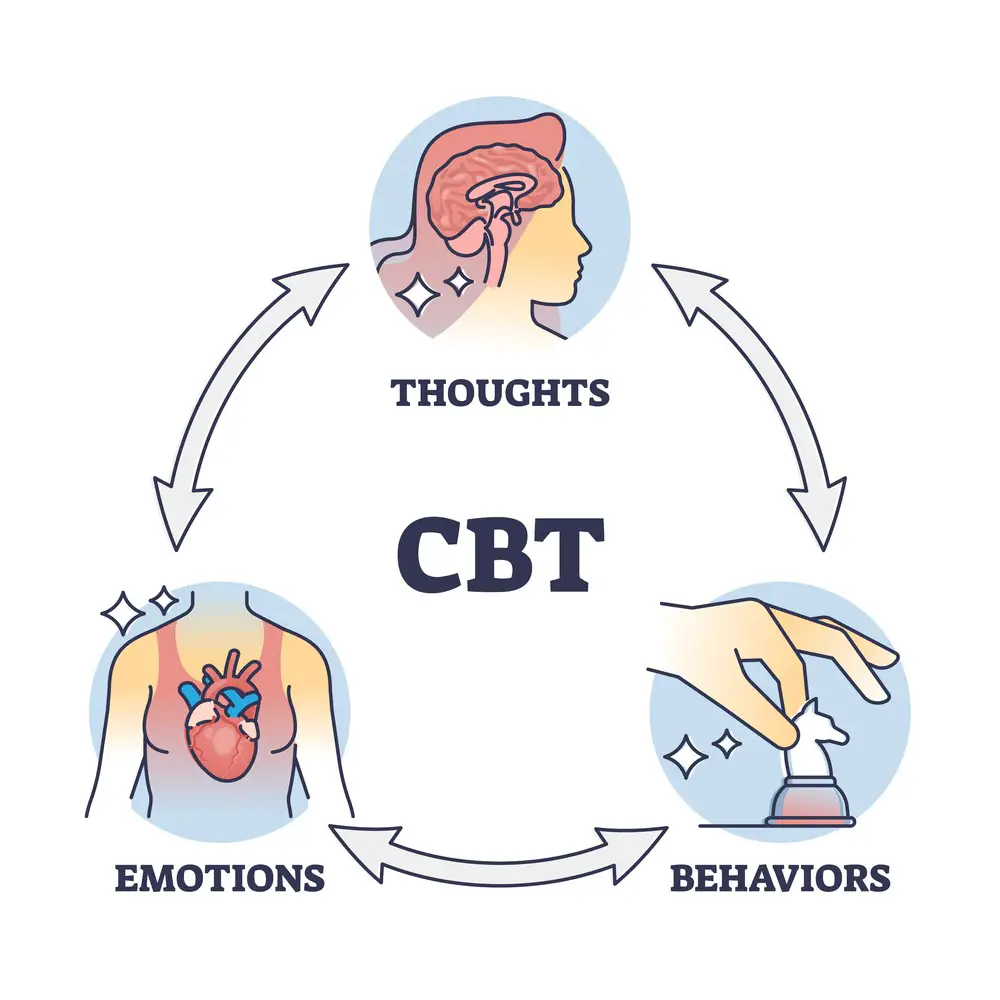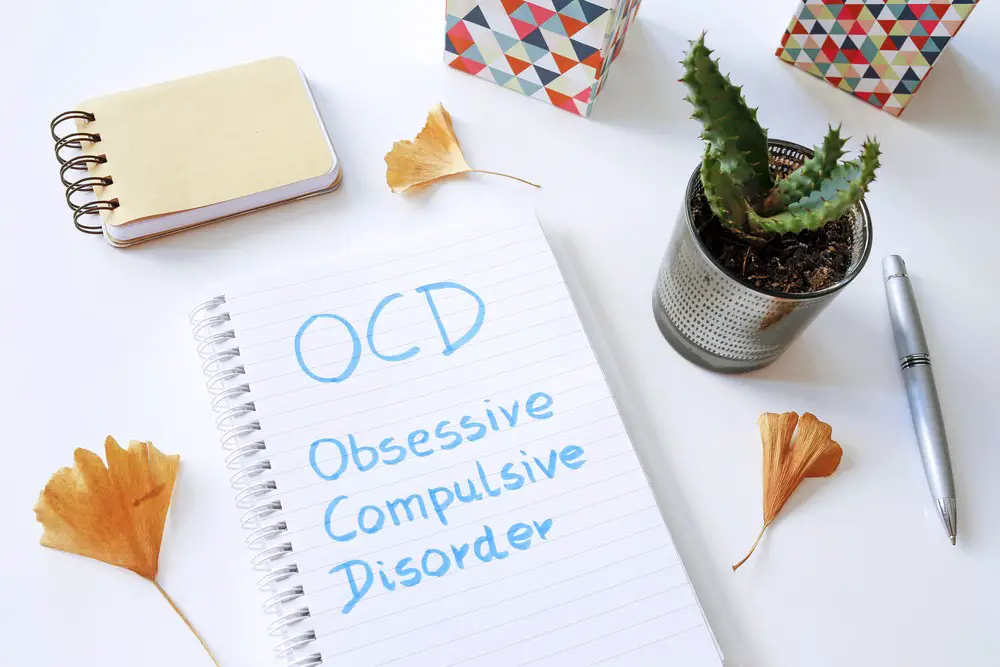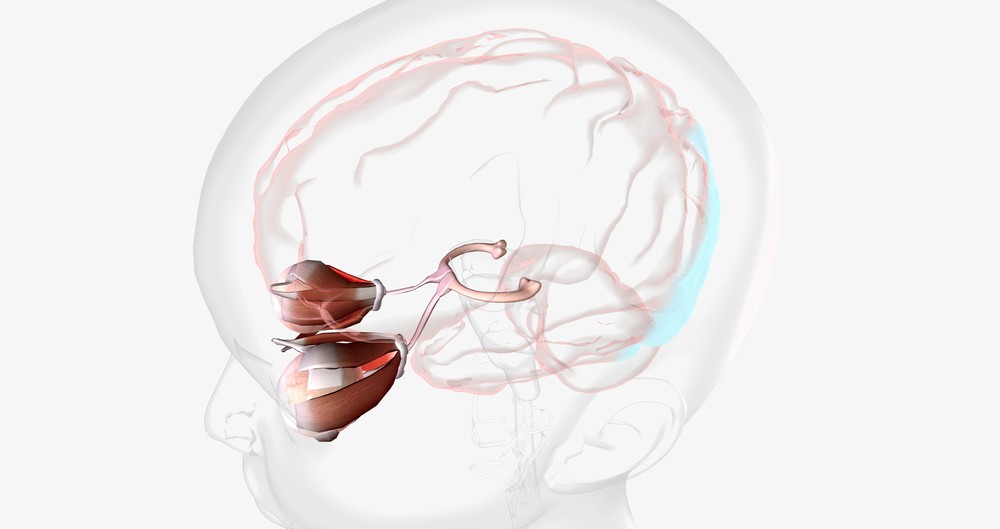As a BetterHelp affiliate, we receive compensation from BetterHelp if you purchase products or services through the links provided
Obsessive-Compulsive Disorder (OCD) is a debilitating mental health condition affecting millions worldwide. Traditional treatment methods, such as Cognitive Behavioral Therapy (CBT) and medication, have proved helpful for many sufferers. However, there’s a growing interest in alternative approaches to address OCD, such as Eye Movement Desensitization and Reprocessing (EMDR).
EMDR is a psychotherapy technique initially developed to treat PTSD and trauma-related disorders. Over the years, its application has expanded to encompass various mental health issues. One area of recent intrigue is the potential use of EMDR to relieve the distressing symptoms of OCD. This innovative therapy aims to reduce the emotional charge associated with intrusive thoughts, compulsions, and obsessions, thus freeing sufferers from the grip of this debilitating condition.
Key Takeaways
- EMDR is a psychotherapy technique with origins in PTSD treatment, currently being explored for OCD management
- Traditional OCD treatments include CBT and medication, emphasizing the importance of addressing intrusive thoughts and behaviors.
- EMDR for OCD involves adapting its protocols to target the emotional aspects of obsessions, compulsions, and intrusive thoughts
EMDR and Its Origins
Once upon a time, a breakthrough in therapy emerged, transforming how people cope with trauma: Eye Movement Desensitization and Reprocessing (EMDR). EMDR therapy, a brainchild of the brilliant Dr. Francine Shapiro, has made waves in psychology since the late 1980s. Let’s dive into the origins of this innovative technique.
It all started when Dr. Shapiro stumbled upon something remarkable. She noticed that certain eye movements could reduce the intensity of disturbing thoughts. Intrigued by her discovery, she set her sights on developing a comprehensive therapeutic approach. This groundbreaking therapy aimed to help people heal from emotional distress, and it didn’t take long to gain recognition.
Firmly rooted in the Adaptive Information Processing (AIP) model, EMDR’s core principle lies in the belief that our brains possess an innate ability to process and heal from trauma. However, this natural process sometimes gets disrupted, leaving emotional wounds unhealed. Dr. Shapiro’s brainchild swoops in like a knight in shining armor, stimulating the brain to process and resolve these emotional blockages.
With EMDR, the therapeutic process takes center stage. Therapists gently guide clients through eye movements, aiming to stimulate the brain’s natural healing mechanisms. Working together like a well-oiled machine, these swift eye movements bring traumatic memories to the forefront, allowing the client to process them more healthily.
All good things must come to an end, though, right? Well, not quite. EMDR’s journey has been spectacular, pushing the boundaries of therapy and garnering widespread acclaim. As we acknowledge and celebrate the origins of this wondrous technique, let’s not forget the driving force behind it all: the indomitable spirit of Dr. Francine Shapiro.

OCD Overview
Obsessive Compulsive Disorder (OCD) is a prevalent mental health condition that wreaks havoc on the lives of numerous individuals. It’s a tortuous cycle of intrusive thoughts, overwhelming anxiety, and ritualistic behaviors, leaving sufferers feeling trapped in their minds.
At the heart of OCD lie obsessions and compulsions. Obsessions are the persistent and unwanted thoughts that taunt and torment an individual. These thoughts typically concern contamination, loss of control, or harm to oneself or others. The distress these obsessions generate is palpable, like a dark cloud that refuses to disperse.
Compulsions are the consequential actions taken to quell the anxiety stemming from obsessions. These repetitive behaviors or mental rituals can involve washing hands, checking doors, or counting objects. Unfortunately, the relief is fleeting, and the cycle starts anew.
The impact of OCD extends beyond the obvious turmoil of obsessions and compulsions. Anxiety and depression often go hand-in-hand with the disorder, forming an unholy trinity that erodes the sufferer’s quality of life.
OCD is a chameleon of mental health disorders, manifesting in various forms and tricking its victims into believing their actions are necessary. Regaining control’s a constant battle, but never fear; there is hope. With consistent treatment and support, many individuals live fulfilling lives despite the challenges posed by OCD.

Traditional OCD Treatments
When it comes to treating OCD, many options exist in the therapy world. Among the most prevalent and widely recognized treatment strategies is cognitive behavioral therapy (CBT), an effective and time-tested approach.
CBT tackles the vicious cycle of obsessive thoughts and compulsions by challenging the faulty beliefs underlying them. Simply put, it strengthens the brain’s ability to resist the urge to obsess and ruminate. Many individuals grappling with OCD have benefitted from this powerful tool.
Another shining star in OCD treatments is exposure and response prevention (ERP). Hailed as a game-changer, a specific branch of CBT targets OCD symptoms head-on. ERP involves deliberately exposing the person to their triggers while preventing the associated ritualistic response. It’s like facing fears and rewiring the brain’s response to anxiety-ridden situations. Though it might seem daunting initially, the courage to face the fear eventually lessens its grip.
Psychotherapy, a broader term encompassing various psychological interventions, has also played a significant role in the mental health sphere. While it may not be tailored solely for OCD, it can help unravel emotional knots that compound the condition. Navigating the complex web of inner turmoil with a skilled professional by one’s side can make all the difference.
Traditional OCD treatments, such as CBT, ERP, and psychotherapy, have been making waves in the mental health community, providing much-needed relief to countless sufferers. Each strategy has nuances but shares a collective aim: to empower individuals with OCD to regain control of their lives and foster a healthy mental state.

EMDR for OCD
Imagine struggling with intrusive thoughts and excessive worries, only to find a ray of hope through a treatment called Eye Movement Desensitization and Reprocessing (EMDR). For those haunted by Obsessive-Compulsive Disorder (OCD), this unique approach offers a soothing balm for the mind and a chance to reclaim their lives.
EMDR is a powerful therapeutic technique originally developed to help individuals cope with trauma. While it’s best known for treating Post-Traumatic Stress Disorder (PTSD), many mental health professionals have expanded its application to various anxiety disorders, including OCD. They’ve found that this innovative treatment can usher in order, even amidst the chaos of unwanted symptoms.
At the heart of EMDR lies reprocessing, where clients revisit traumatic or trigger events in a controlled environment. As they focus on these distressing memories, they engage in bilateral stimulation, often through guided eye movement, tactile sensations, or auditory cues. This dual attention helps their brains reprocess and integrate these experiences, reducing the intensity of negative emotions.
What has caught the attention of many in the mental health field is the effectiveness of EMDR in mitigating symptoms linked to OCD. The disorder, characterized by recurrent, unwanted thoughts and repetitive behaviors, often leaves individuals trapped in a never-ending cycle of order and chaos. By targeting the underlying triggers, EMDR shows promise in breaking this loop.
There’s more to EMDR than just desensitizing troubling memories, though. The treatment also promotes the growth of new, adaptive neural pathways, enabling clients to adopt healthier coping strategies. Gone are the days of trying to block out uncomfortable thoughts or forcing rigid rituals; instead, individuals can face anxiety-provoking situations with a newfound resilience.
However, it’s essential not to get carried away with the accolades of EMDR. While it’s proven effective for many, it may not be the panacea to every case of OCD. Treatment outcomes vary, and finding the right fit sometimes necessitates exploring different modalities.
In a world of uncertainty, it’s profoundly reassuring to know that options like EMDR are available to those wrestling with OCD. As a beacon of hope on the horizon, this innovative treatment helps to navigate the stormy seas of intrusive thoughts and compulsions, guiding individuals back to the shores of peace and order.

Application of EMDR in OCD
Eye Movement Desensitization and Reprocessing (EMDR) has been making waves in the world of mental health, particularly as a promising tool for OCD sufferers. This innovative approach targets the troubling intrusive thoughts, unsettling memories, and compulsive behaviors that make life so challenging for those with OCD.
When it comes to EMDR, the spotlight is on the eyes. By asking clients to recall distressing thoughts or memories while engaging in back-and-forth eye movements, therapists can help individuals process their experiences more healthily. This technique seems to possess a unique knack for breaking through the obsessive-compulsive cycle, offering patients newfound hope.
Indeed, a case series examining the application of EMDR for OCD demonstrated its potential. The study participants reported not only a reduction in unwanted thoughts but also an improvement in their overall well-being. As they got better at managing their symptoms, they began to reclaim their lives from the grip of OCD.
That being said, EMDR isn’t a one-size-fits-all solution. Therapists must tailor their approach to each individual’s unique struggles and needs, such as addressing specific traumatic memories associated with their compulsions. Additionally, it’s important to remember that EMDR is just one aspect of a holistic treatment plan, often combined with other methods like cognitive-behavioral therapy or medication.
In conclusion, EMDR holds great promise for those grappling with OCD. This revolutionary therapy paves the way toward a brighter, more stable future by targeting the intrusive thoughts and memories that fuel obsessions and compulsions.
EMDR Protocol Adaptations for OCD
When addressing Obsessive-Compulsive Disorder (OCD) with Eye Movement Desensitization and Reprocessing (EMDR) therapy, unique adaptations are tailored to this complex condition. By making subtle changes to the EMDR protocol, therapists can effectively cater to the specific needs of OCD clients.
First and foremost, it’s essential to establish a strong therapeutic alliance with the client. This helps create a supportive and trusting environment where clients feel safe enough to explore their intrusive thoughts and compulsions. By working together, the therapist and client can better identify and target the distressing experiences contributing to OCD symptoms.
EMDR protocol adaptations for OCD often focus on the underlying emotional triggers instead of solely targeting obsessions or compulsions. For instance, a therapist might encourage clients to delve into their feelings of guilt or shame. This approach fosters a better understanding of the driving forces behind their compulsive behaviors, paving the way for more effective EMDR sessions.
As part of the EMDR process, clients are guided to create a “safe place” or “calm place” in their minds. For individuals with OCD, fine-tuning this mental refuge is especially vital. By making the safe place more vivid and real, clients can better visualize it during EMDR sessions, helping them stay grounded amidst their distressing OCD-related thoughts.
During the desensitization phase of EMDR, therapists may work with clients to reprocess obsessions and compulsions using the bilateral stimulation technique. This involves guiding clients’ eyes to follow strategically controlled back-and-forth movements while the client recalls a distressing thought or memory. The goal is to decrease the anxiety associated with these obsessive thoughts or compulsive behaviors, allowing clients to experience relief and increased control over their symptoms.
Lastly, EMDR therapists should be prepared for the possibility of OCD symptoms “morphing.” This phenomenon occurs when clients experience a decrease in the intensity of one obsession or compulsion, only for a new one to emerge. Therapists must remain vigilant and adapt strategies to target the evolving symptoms, fostering long-lasting changes in their clients’ lives.
In conclusion, adapting the EMDR protocol to suit OCD cases is crucial for maximizing therapeutic outcomes. By building a trusting relationship, targeting emotional triggers, and remaining flexible with the shifting nature of OCD symptoms, therapists can better support clients on their journey to healing and recovery.
Efficacy and Research
EMDR (Eye Movement Desensitization and Reprocessing) therapy has been gaining attention in recent years, and several researchers have delved into its application for OCD (Obsessive-Compulsive Disorder). In their quest to understand its effectiveness, various research methods have been employed, such as randomized controlled trials, case studies, and systematic reviews.
One notable randomized controlled trial explored EMDR’s potential for reducing OCD symptoms. Participants were divided into EMDR and control groups, and it was observed that those experiencing the eye-movement intervention reported a significant reduction in anxiety and obsessive symptoms. However, the researchers cautioned that this study had a small sample size, so further research with larger samples is needed to confirm the findings.
In addition to trials, case studies have shed some light on the practical application of EMDR for those living with OCD. These personal accounts offer hope as they illustrate how the intervention has been life-changing for some individuals. Restoring a sense of control, alleviating intrusive thoughts, and decreasing rituals, these stories emphasize the potential benefits of EMDR therapy.
Regarding reviews of the existing literature, findings are somewhat mixed. Some researchers concur that EMDR holds promise in treating OCD, pointing out that it has successfully reduced symptoms and improved overall quality of life. On the contrary, others argue that more conclusive evidence is necessary before one can confidently proclaim EMDR as a breakthrough treatment for OCD.
As OCD is a complex and often debilitating condition, it is evident that progress in establishing EMDR as a viable treatment option depends on robust research. Further randomized controlled trials, larger samples, and comprehensive analysis of case studies are crucial in this journey, allowing both individuals and professionals better to grasp the true potential of EMDR therapy for OCD.
Additional EMDR Applications
Eye Movement Desensitization and Reprocessing (EMDR) therapy, initially designed to treat post-traumatic stress disorder (PTSD), has proven effective for various mental health conditions. From persistent phobias to crippling eating disorders, EMDR’s therapeutic impact has been a genuine game-changer for countless individuals.
Phobias and anxiety disorders often stem from past trauma, and EMDR has shown remarkable results in addressing these issues. The therapy can help untangle the roots of distress and provide relief for people trapped in the grip of debilitating fear.
Eating disorders, such as anorexia and bulimia, are knotty mental health conditions often related to feelings of self-worth and control. EMDR’s processes can unpack the underlying associations and contribute to healthier relationships with food and body image.
Dissociative and personality disorders, which involve diverse and complex symptoms, have also seen improvements using EMDR. By breaking through emotional barriers and addressing trauma, patients gain a newfound understanding and outlook on their mental health.
Individuals dealing with trichotillomania (hair-pulling disorder) can also benefit from EMDR, which aims to diminish the unconscious impulses driving the behavior.
Within adolescent obsessive-compulsive disorder (OCD), EMDR has demonstrated its value in helping young people overcome the invasiveness of repetitive thoughts and compulsive actions. By targeting the source of the disorder, EMDR can foster a more balanced mind for those struggling with OCD.
War-related PTSD has always been a significant concern for veterans returning from combat. EMDR therapy has proven instrumental in managing their mental health, providing solace to soldiers haunted by their experiences and memories.
EMDR’s wide-ranging therapeutic scope has made it a reliable and practical option for various mental health conditions. With a focus on healing past trauma, EMDR continues to offer hope and resilience for those struggling to reclaim their lives.
Conclusion
In summary, EMDR has shown promising results in treating OCD, relieving many individuals who struggle with this life-disrupting condition. As the research advances and new techniques continue to emerge, it is becoming clear that EMDR has the potential to transform lives and restore a sense of balance to those grappling with obsessive-compulsive disorder.
Moreover, it’s heartening to consider the potential that EMDR therapy holds in mental health care. With its unique approach to addressing the root causes of OCD, EMDR has the power to alleviate the burden on individuals and families alike. As clinicians and therapists continue to refine their understanding of this groundbreaking modality, there is no telling what heights might be achieved in the fight against this sometimes debilitating condition.
So, let’s applaud the tireless efforts of researchers and mental health professionals dedicated to exploring and expanding the possibilities that EMDR offers when it comes to OCD treatment. The road may be long, but the promise of a brighter future for those affected by obsessive-compulsive disorder makes the journey well worth the effort.
Frequently Asked Questions
How effective is EMDR in treating OCD?
EMDR can be surprisingly effective in treating OCD. While it’s not a one-size-fits-all solution, many individuals with OCD have experienced significant improvement in their symptoms through EMDR therapy. Much like any treatment, the effectiveness varies from person to person, and it’s essential to work with a qualified therapist to explore if EMDR is the right fit for your particular situation.
What is the process of EMDR therapy for OCD?
EMDR therapy for OCD typically involves eight phases, beginning with history-taking and preparation, then assessment and multiple treatment sessions. During these sessions, a therapist guides the individual to focus on their OCD-related thoughts, memories, and sensations while simultaneously stimulating both sides of the brain through eye movements, sounds, or taps. This helps the individual reprocess and come to terms with the distressing memories, eventually reducing the intensity of their OCD symptoms.
How long does it take to see results with EMDR for OCD?
The duration required to see noticeable results with EMDR therapy for OCD varies from person to person. Some individuals may start to see improvements after just a few sessions, while others might need a more extended period of consistent therapy. Patience and commitment are key when embarking on EMDR therapy, so trust in the process and celebrate your progress with your therapist.
Can EMDR be combined with other treatments for OCD?
Absolutely! EMDR can be a great complementary therapy to traditional treatments for OCD, such as Cognitive Behavioral Therapy (CBT), Exposure and Response Prevention (ERP), and medication. Combining EMDR with other therapies can provide a more holistic and integrative approach, potentially enhancing the overall effectiveness of the treatment plan.
Are there any side effects or risks associated with EMDR for OCD?
EMDR is generally considered a safe and low-risk therapy for OCD. However, some individuals may experience temporary heightened emotional distress or vivid dreams during the treatment. It’s important to discuss any concerns or discomforts with your therapist, who can help you navigate the therapy and provide guidance as needed.
What qualifications should I look for in an EMDR therapist specializing in OCD?
When seeking an EMDR therapist for OCD treatment, look for a licensed mental health professional who has completed an EMDR training program approved by the EMDR International Association (EMDRIA) or an equivalent organization. Additionally, consider the therapist’s experience treating OCD and their overall approach to incorporating EMDR with other therapeutic modalities for your specific needs. Finding someone you feel comfortable with is crucial, as a strong therapeutic relationship is vital for successful treatment.
- 7 Ideas to Help You Relax and Unwind on a Family Vacation - April 27, 2025
- How Having Cybersecurity Protection Helps You Relax - April 25, 2025
- 8 Reasons Why Spending Time Outside Calms You Down - April 25, 2025
This site contains affiliate links to products. We will receive a commission for purchases made through these links.



